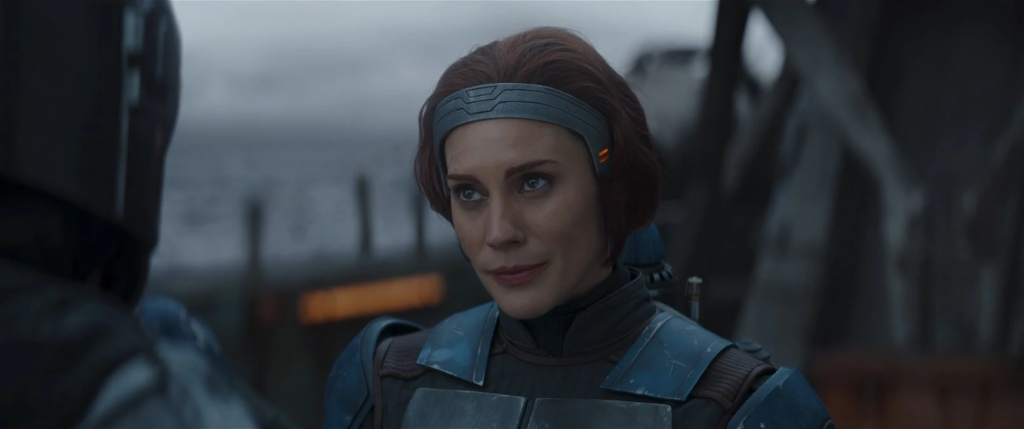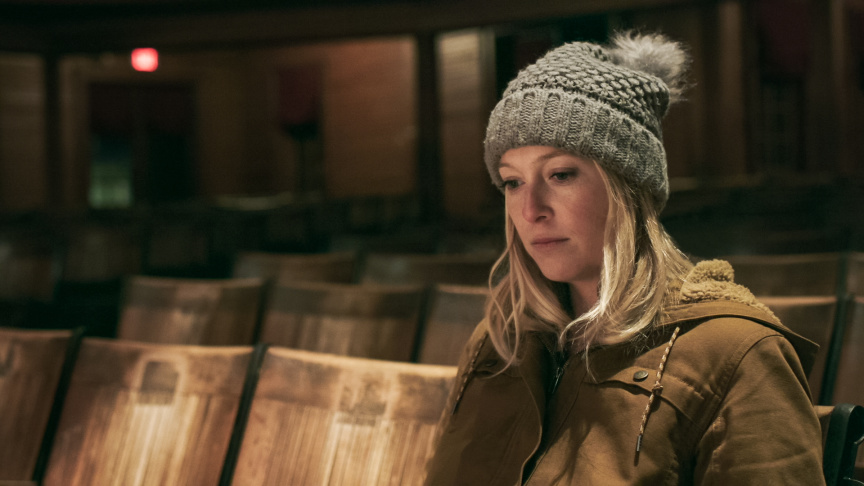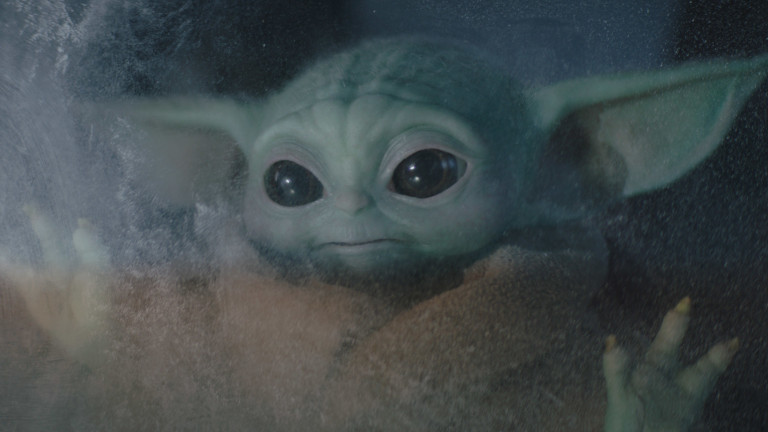Would Mando be better off simply traveling to various planets asking locals in their bars for help finding Jedi? Maybe he should stand on a table holding Baby Yoda up, yelling, “Does anyone know where this kid came from?” That’s basically where we’re at.
Last episode saw the Razor Crest almost destroyed because Mando needed to travel at sub-light to protect Frog Lady’s eggs. The reason beyond this dangerous missions was supposed to be that Frog Lady’s husband had valuable information as to where Mando could find other helmet-wearers like him. Mando will likely spend the rest of his days picking spider webs out of his ship in service to this vital step in his journey.
Upon arriving at the water-heavy planet Trask, almost destroying what’s left of the ship in the process, Mr. Frog Lady does have a big reveal. He points at a bar. That’s it. That’s the information Mando almost died for. A glorified chowder recommendation.
Mando would have been much better off simply asking the X-wing pilots if they knew of any Jedi. They probably do. None of this is nitpicking. This season has yet to supply a reason for its broader quest to find other Mandalorians.
Mando finds some leads while Baby Yoda chows down on octopus chowder. Mr. Frog Lady didn’t exactly give the best intel, as the Quarren fishing boat was less interested in helping Mando than acquiring his armor. Baby Yoda’s floating bassinet apparently doesn’t float over water.
Part of the beauty of The Mandalorian is that it’s clearly crafted by people who love Star Wars. The series isn’t constructed in a way that forces anyone to watch animated shows like The Clone Wars or Rebels, while rewarding those that do. Seeing Bo-Katan in live-action is amazing, especially with Katee Sackoff reprising her role from the animated series.
Unlike Mando, Bo-Katan and her buddies are free to remove their helmets. While fitting in line with their animated appearances, seeing helmet-less Mandalorians is also valuable for the audience. People like to see faces and the expressions worn on them. This dynamic also allows the show to explore Mando’s core belief, one that would naturally sound pretty radical to any casual viewer.
Bo-Katan suggests that Mando is a Child of the Watch, essentially a Mando-extremist cult that broke off from the rest of Mandalore’s society. Mando doesn’t have a ton of time to process this information before the rest of the 35-minute episode’s action scenes need to take place, but this is a valuable question for the show to explore over the course of its run. Ideally, we the viewer may like to envision a scenario where Mando settles down, able to look at his adopted son with his own eyes.
Speaking of Baby Yoda, thankfully the little guy didn’t eat any more of Frog Lady’s eggs. It’s kind of ridiculous that Mando would ask her to babysit considering his snacking habits last episode, but it’s not like he has a ton of friends, on Trask or elsewhere. Kuiil would have been a great traveling babysitter. I miss him.
The action scenes aboard the Gozanti-class Imperial cruiser were great. It was super fun to see TV veteran Titus Welliver as the ship captain, who sadly died before he got a chance to have some tea. Obviously the other Mandalorians weren’t interested in raiding the ship for blasters, or other weapons.
Great to see the return of Moff Gideon. Giancarlo Esposito is fabulous in everything he’s in. Darksaber is one of the big questions of this season, one that I suspect the show won’t be in too big of a rush to address. Fun episodes like this make the destination less important than the journey.
Mando’s quest to find other Mandos did prove fruitful. After quoting Hillary Clinton’s “Stronger Together” slogan from her 2016 campaign, Bo-Katan tells Mando to head to Calodan to find Ahsoka Tano, another fan favorite. He probably could have stumbled upon that tidbit without having to travel by sublight to Trask, but here we are.
“The Heiress” demonstrates the show’s keen ability to simultaneously satisfy casual fans and Star Wars diehards. The Mandalorian rarely suffers when it drags its feet, but this episode moved the plot forward in a way that’s been lacking from this season’s first two installments. We’re almost at the halfway marker, as much as it feels like things just got started. Boba Fett may not come back until the end of the season, if at all. For now, that hardly seems to matter.
For more of Ian’s Mandalorian analysis, be sure to check out Estradiol Illusion’s weekly recaps



















